We provide here summary plots from HPQCD’s calculations that demonstrate the physics impact of lattice QCD. We also include world summary plots where appropriate.
Meson masses and decay constants
The plot below shows the masses of "gold-plated" mesons comparing HPQCD results to experiment (an update of a figure that appeared in [1]). Gold-plated mesons are those that are narrow with no strong two-body decay mode and so are well-characterised experimentally. Note that some of our results were predictions made ahead of experimental confirmation, and some are predictions awaiting experimental results.
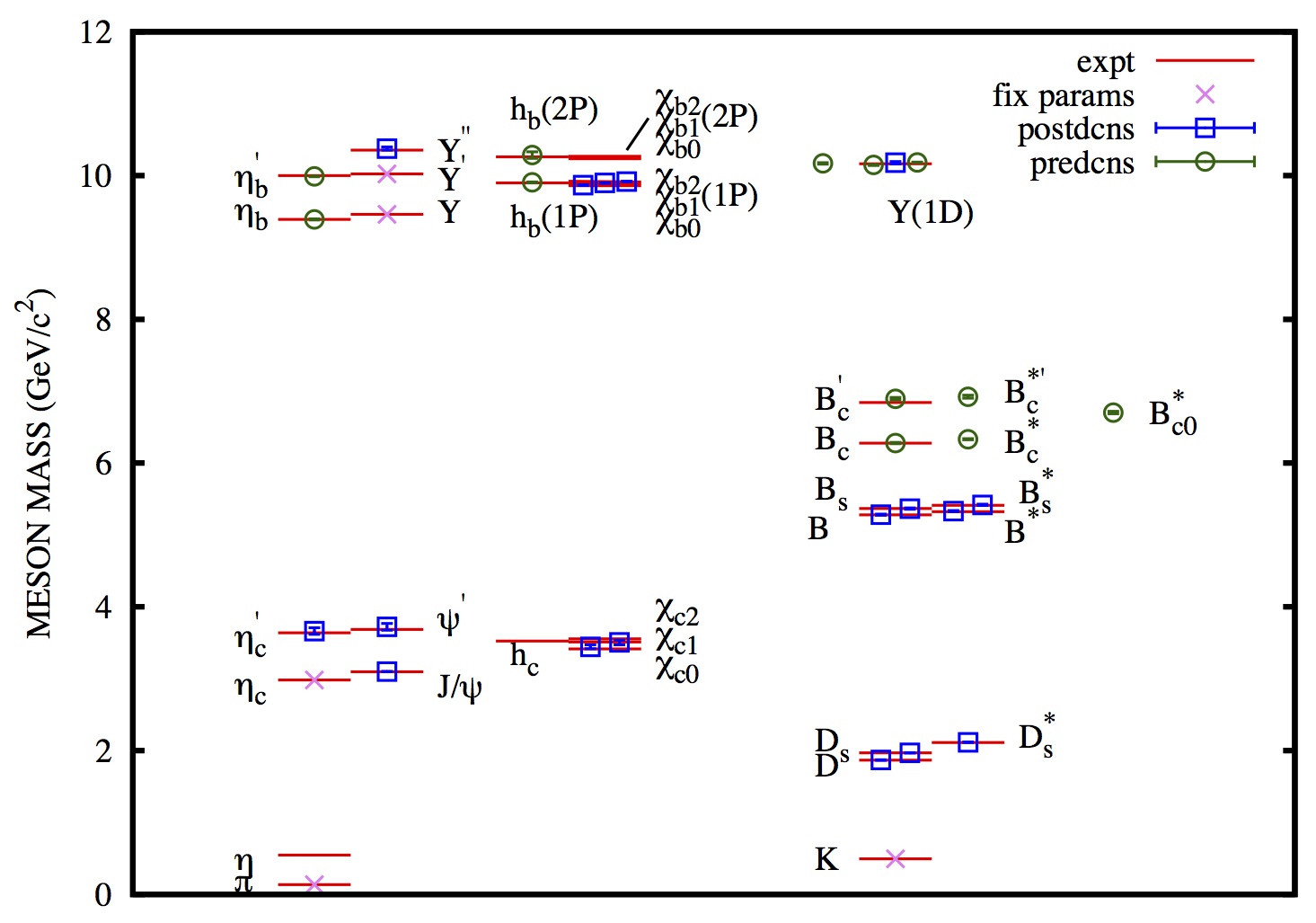
The summary below of results for meson decay constants (from [2]) complements that above for meson masses. The meson decay constant is the amplitude for the quark and antiquark inside a meson to annihilate to a $W$ boson (in the case of an electrically charged pseudo scalar meson) or to a photon (in the case of an electrically neutral vector). As with the meson masses above, this is a quantity that can be determined from lattice QCD and compared accurately to experiment as a stringent test of the Standard Model. For annihilation to a $W$ boson this also requires knowledge of (or can be used to determine) the Cabibbo-Kobayashi-Maskawa matrix elements that couple quarks to $W$ bosons.
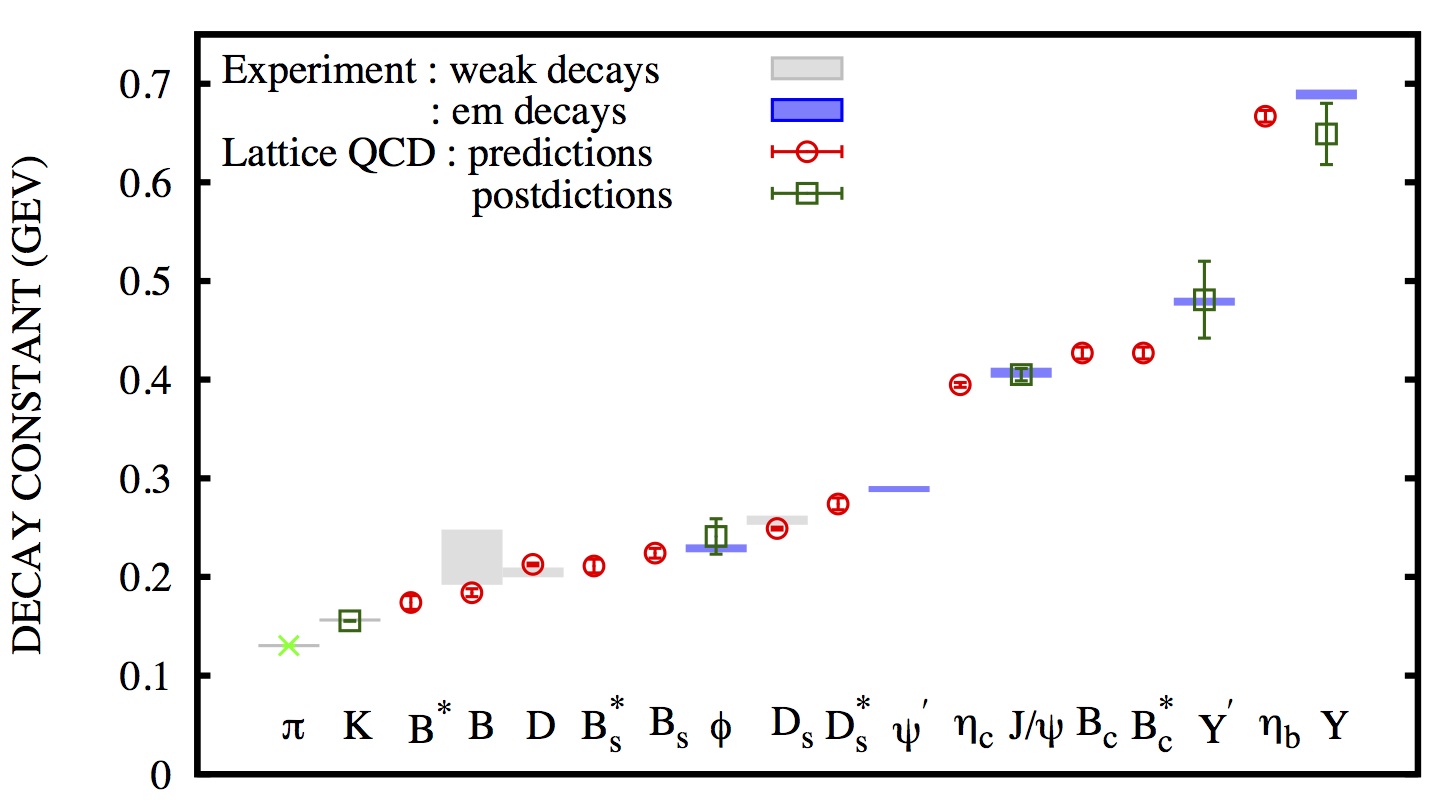
More detail on decay constants of $B$ and $B_s$ mesons is given below, where HPQCD results from [3] are the world’s best. We use improved Nonrelativistic QCD [4] for the $b$ quark and the Highly Improved Staggered Quark action [5] for the light quarks. We include $u$, $d$, $s$ and $c$ quarks in the sea with $u/d$ quarks at their physical masses for the first time.
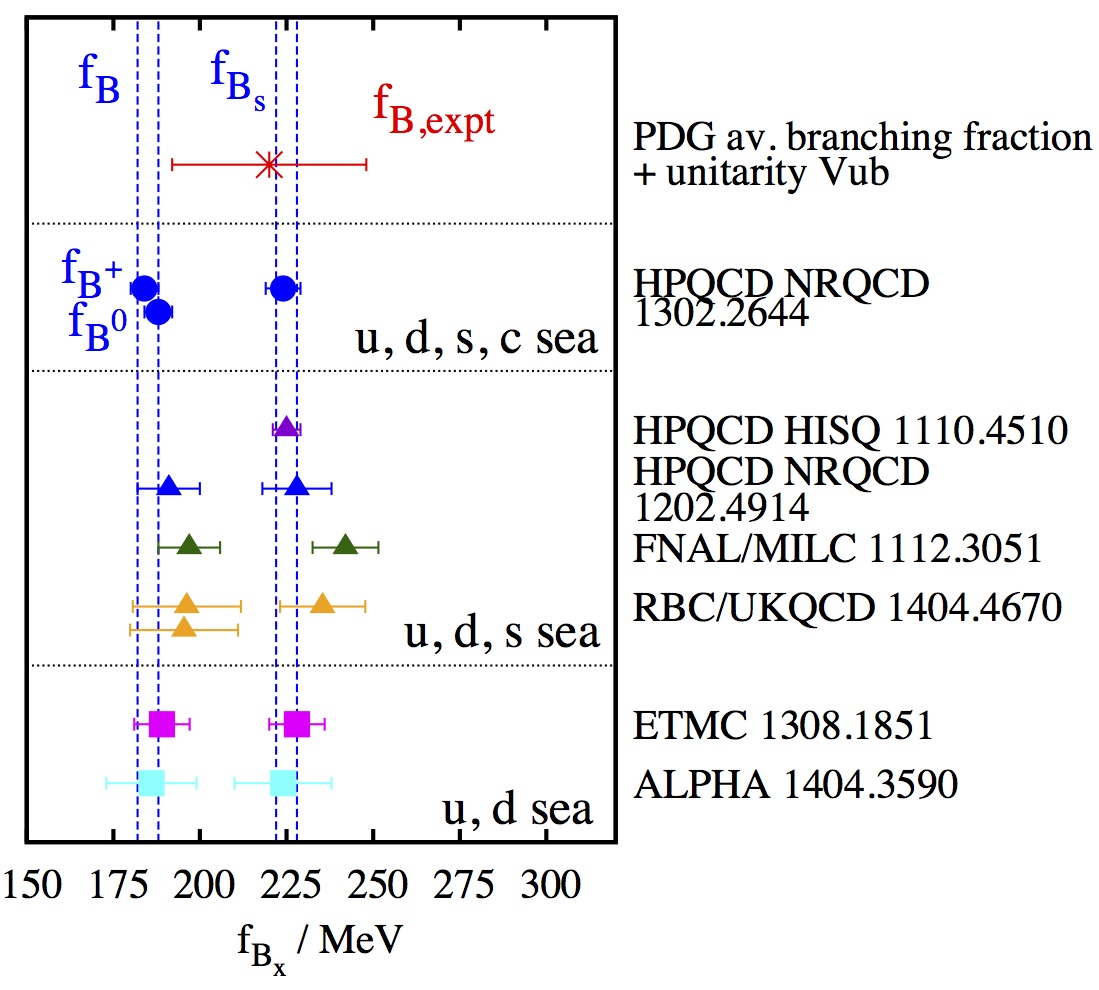
More detail on $K$ and $\pi$ decay constants is shown below for HPQCD results from [6] showing how small the discretisation effects are for the Highly Improved Staggered Quark action being used here. Blue points correspond to a lattice spacing of 0.15 fm, green to 0.12 fm and red to 0.09 fm. The x-axis is proportional to the $u/d$ quark mass and note that there are lattice QCD results at physical $u/d$ masses. Black points indicate the experimental value for the pi meson decay constant. This is used to fix the lattice spacing in the lattice QCD calculations. The lattice QCD calculation of the $K$ meson decay constant is used, with experiment, to determine the CKM element $V_{us}$.
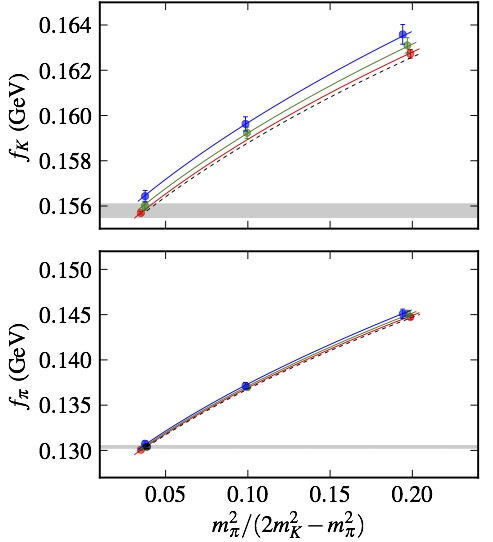
We have also developed methods for determining decay constants for mesons containing heavy ($b$ and $c$) quarks using the Highly Improved Staggered Quark action. The advantage of this is that the HISQ action has chiral symmetry and so the decay constant is absolutely normalised. See [7], [8] and [9]. This allows us to calculate the decay constant as a function of the mass of the heavy quark (using as a proxy for this the mass of the pseudoscalar meson made of heavy quark and antiquark). The plot below shows the results for this, contrasting results for heavyonium mesons with those of heavy-charm mesons and heavy-strange mesons.
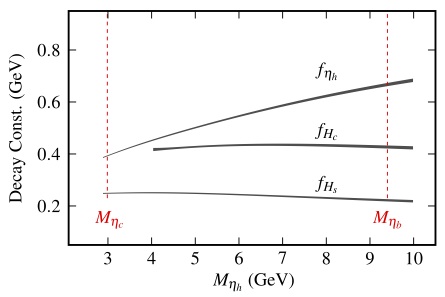
References
- [1] arXiv:1207.5149
- [2] arXiv:1503.05762
- [3] arXiv:1302.2644
- [4] arXiv:1110.6887
- [5] arXiv:hep-lat/0610092
- [6] arXiv:1303.1670
- [7] arXiv:1008.4018
- [8] arXiv:1110.4510
- [9] arXiv:1207.0994